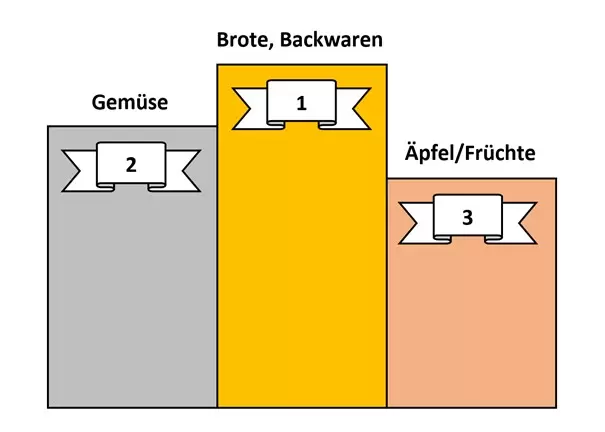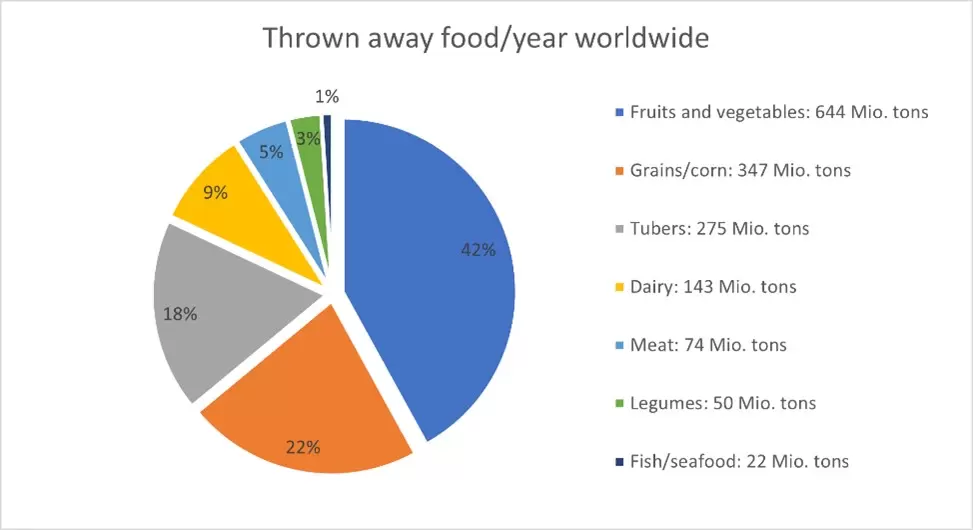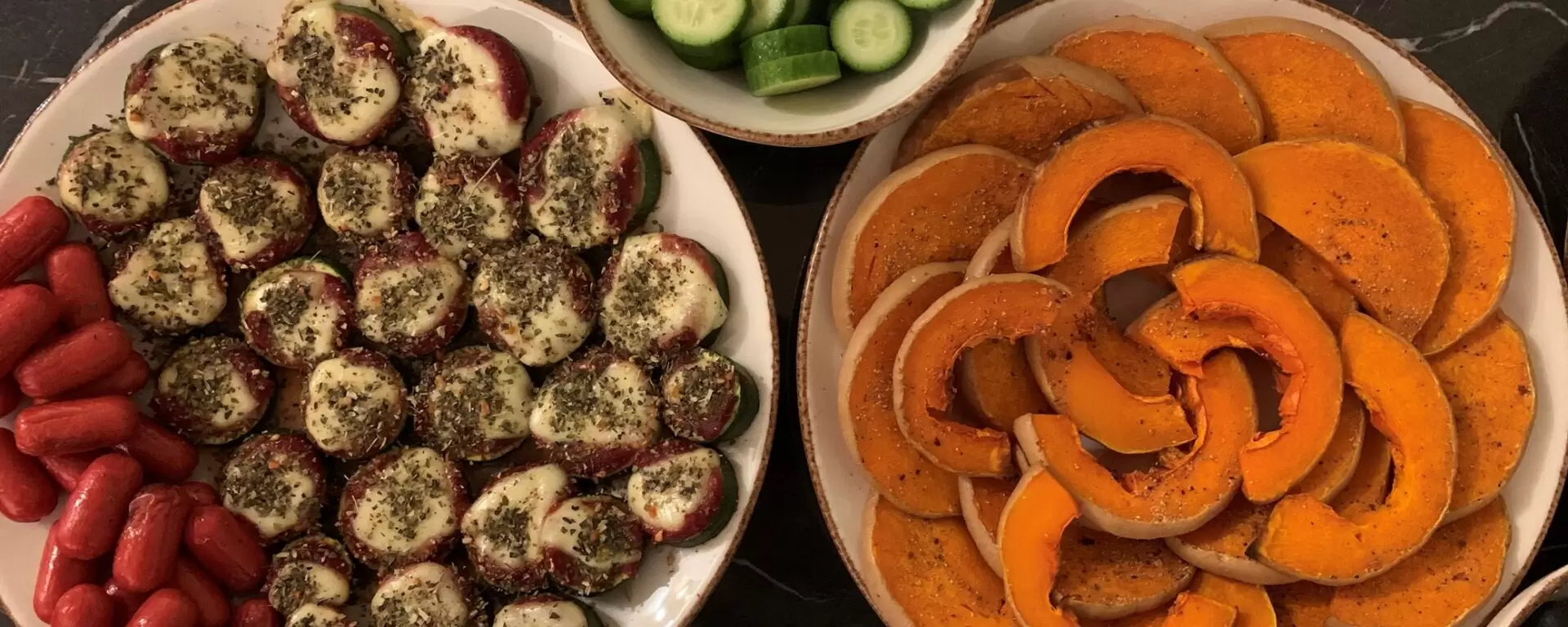Hi everyone!
Cooking with leftovers or expired food is really simple. The main idea we want to show you is that you can combine a lot of ingredients to get a well-balanced and healthy meal. We don’t want to put you on the rack. Therefore, we want to jump right in to the main idea of this contribution and hope that you enjoy scrolling through this article.
Contents of this contribution:
- Food waste recipe book
- What can we do? Methods to prevent (vorbeugen) food waste
- Possible methods to preserve (konservieren) food
- Research and survey on food waste
- Conclusion
We want to thank our collaboration partner Saskia Widmer (makelowcarbtoselfmade, Instagram) for the recipe tips and image providing which are actually very helpful preventing food waste in the long term and which are also extremely healthy. We had the possibility to inspire ourselves and create the following meals together and we recooked them as well, so, the prescription details in this recipe book should also work for you. Enjoy!
What can we do? Methods to prevent food waste
So, what can we do to prevent this as good as possible? We listed some possible actions below [1]:
- Do not go shopping hungry
Everyone is probably familiar with this. Hunger fills the shopping cart. By the way: A large glass of water also reduces the feeling of hunger. - Better purchase planning
This actually nothing new. But for us, it is one oft he biggest levers (Hebeln) against food waste. Before you go shopping think about what you want to cook that week and look at recipes. Also check the supplies to see what’s left. Ant then write down quantities and buy exactly what you need, if possible. - Store food properly
Proper storage extends shelf life. Pasta, flour, couscous, lentils (Linsen) and oils like it dry and dark on the shelf. Southern fruits should be stored at room temperature. Lettuce, vegetables and fruit do not wilt (welken) as quickly at a humidity of around 60% – put them in the fridge. If vegetables or fruits are packed in plastic, you should remove the packaging immediately. Many fruits and vegetables are packaged in plastic, this causes large mountains of waste. If possible, buy vegetables or fruits without plastic packaging. - Buy seasonally and regionally vegetables and fruits
Seasonally and regionally vegetables and fruits last longer. They also have a higher vitamin content and reduce your carbon footprint (CO2-Fussabdruck). - Give vegetables with a misshaped form a chance
Vegetables or fruits with an abnormal form are not necessarily toxic or more harmful than normal ones. Give them also a chance while picking them in the store. - Check the state of the food
Always make sure you check the state of the food when it’s expiration date has passed. Some days over the expiration date does not mean that the food is toxic from the “expires on”-date on. Especially when the package has not been opened yet. - Try out a low-carb lifestyle
You will find more information regarding this topic in the recipe book at the end of this contribution.
Possible methods to preserve food
If by any chance you still buy too much food or groceries, you can apply following methods [2]:
- Freezing
Freezing is one of the easiest and safest ways to make food last longer. Temperatures of -18°C do not kill the stubborn bacteria, but they slow down their spread. In addition, freezing preserves many nutrients and flavor well.
In general, the more watery the food, the less suitable it is for freezing. While solid vegetables such as broccoli or carrots, herbs, berries, many fruits, meat, fish and even bread are excellent for freezing. Tomatoes and cucumbers, should not be frozen. This is because they become soft and mushy after thawing. However, there are exceptions: Raw potatoes, for example, taste sweetish after thawing and have a strange consistency – not particularly recommended. But on the other hand, potatoes can easily be stored in a dark place for a longer period of time without freezing. - Pickling (Einlegen)
Pickled vegetables and fruits will keep for several months if stored in a cool and dark place.
When you think of pickling, the first thing that probably comes to mind for many are pickles (Essiggurken). However, almost any vegetable and many fruits can be pickled, and it doesn’t necessarily have to be in vinegar. Think, for example, of antipasti vegetables such as eggplant, artichoke, mushrooms, tomatoes or feta cheese in olive oil. - Preserving (Konservieren)
This is where you put fruit or vegetables into glass jars and then heat the closed jar in a water bath. As the air in the jar expands and escapes during boiling, a vacuum is formed which prevents the spread (Verbreitung) of our unwanted microorganisms. Food can be stored for several months without any problems. You can boil down pretty much all fruits and vegetables, especially popular are fruits boiled down with sugar, soups or sauces. - Drying (Trocknen)
Drying or dehydrating food not only makes it last longer, but also enhances the taste and increases the calorie value per gram of weight. While foods containing water are not particularly suitable for freezing, they can be dried or dehydrated. The targeted dehydration deprives bacteria and fungi (Pilze) of an important cornerstone (Grundstein) for survival – water. For example, you can turn shriveled (verschrumpelt) apples into juicy apple rings, and dried tomatoes are also a delight for sauces, pesto or simply as a snack. Dried pears, apricots, figs (Feigen) or bananas also make good snacks, as do delicious vegetable chips made from sweet potatoes, carrots or zucchini.
Research & Survey
We would like to talk about a serious and general topic, which most likely interests not only us, but also many others in the world probably. It is about food waste. Our goal is to inform us about this topic in our local environment and to find a (hopefully) suitable solutions to reduce food waste.
Although we are aware of food waste in Switzerland, we also thought about this as a national and international issue. We did some research regarding waste in our local area (hometown), Switzerland and worldwide. Instead of covering you with a lot of text, we would like to present you some data of our research.
Here you can see some interesting results of our own local survey (most relevant were picked out, 25 people participated). Click on the charts to see the details:
While searching for more data and figures according to food waste in Switzerland to compare them with our local research data, we also came across the following information:
| Inhabitants in Switzerland: | approx. 8’500’000 (2019) |
| Wasted food per person/year: | 330 kg |
| Total estimated food waste: | 2’805’000’000 kg per year (2019) |
The following food groups are the most thrown away in Switzerland:


Around 1’555’000’000 tons of food are currently wasted worldwide every year. It is interesting to see which food categories are thrown away most frequently as a proportion of the total food wasted.
As you can see, fruits and vegetables and also a large percentage of grains/corn are wasted every year. When we compare these numbers to our local and national statistics, you can see that there is a great potential for improvement, at least for the two biggest food groups.
Conclusion
While doing some research for this contribution, we have come across some new data and figures regarding food waste and we were astonished about the huge amount thrown away every year.
You can also see that food waste prevention consists of many different actions in our lifestyle. We think awareness is important and therefore it is more important to prevent waste at it’s very beginning as you can also save a lot of money and time.
If our goal is to prevent it as good as possible, we have to apply all possible methods which are mentioned above and it is also inevitable that everyone of us has to stick together against the massive waste of our precious food.
What we have learned through this project work is how we can spread messages regarding food waste and proper nutrition via internet. The world wide web offers so many possibilities for information sharing that we felt obliged to share these insights with you.
Authors: Yanick & Kadir
Sources
Contribution research:
Charts of local food waste (own survey)
[1] Preventing tips (nachhaltig-sein.info)
[2] Preserving tips (naturschutz.ch)
[3] Charts data of food waste in Switzerland (foodwaste.ch) | graphic by Kadir Yavuz)
[4] Charts data of food waste worldwide (toogoodtogo.ch) | graphic by Kadir Yavuz)
Recipe book – nutritional facts:
Obesity and carbohydrates (youtube.com | Dr. Jason Fung)
Biology of weight gain (youtube.com | What I’ve learned)
Low-carb studies (healthline.com)
Book: “Der Ernährungskompass” written by Bas Kast 2018, 26. edition, C. Bertelsmann Verlag, München
Recipe book – recipe tips and ideas:
Recipes (instagram.com | makelowcarbtoselfmade)
Images:
Contribution header image (Kadir Yavuz)
Recipes images (instgram.com | makelowcarbtoselfmade)
On-topic posts on dontwastemy.energy
foodwaste at weddings
End Food Waste – The Challenge
Could we nourish the citizens of Zurich with food waste?
Food waste in supermarkets
Best before, not deadly from
The life cycle of bread
Showcase “Food and climate” collaboration Antwerp and Zurich
☷ See the project teams here »
☵ Some words about the contributions »
☴ Our sponsors and partners » (the-horse.education)



Hi Yanick and Kadir
Your article was very informative and interesting to read. Thank you for the delicious recipes.
I was able to learn many more unknown ways to prevent food waste. And the amount of food waste per year is also shocking.
A top article. I am already looking forward to future articles from you guys.
Best regards
Luisa Ndue
The recipes look really nice & tasty! 🙂 You did a great job of making aware of food waste and its (mis)value! Thanks for the tips, some are worth trying!
Ack
Dear Kadir and Yanick
I just clicked your post, because I wanted to see what you guys have done with the concept you presented in our class. It’s a very interesting and important topic and I’m glad you chose it to raise awareness.
The research number on the amount of food waste per year a shocking and not a fact us humans can be proud of.
Thanks to your contribution I know have learned more methods to store and preserve my leftovers. This post has also motivated me to follow your tips and tricks on how to prevent food waste at all. I printed your list out and hung it up in my kitchen so my family and I will be more careful with our shopping and consumption.
And to top it all off you even provided a food waste recipe book. WOW! I haven’t tried one yet but I’ll surely try to use one soon and will send you an update on how it went.
Your project has positively surprised me. I’ve learnt so many new, interesting and quite probably life changing facts.
Amazing job guys. Keep it up. Hope to read your future contributions.
Kind regards
Iain A. Weder